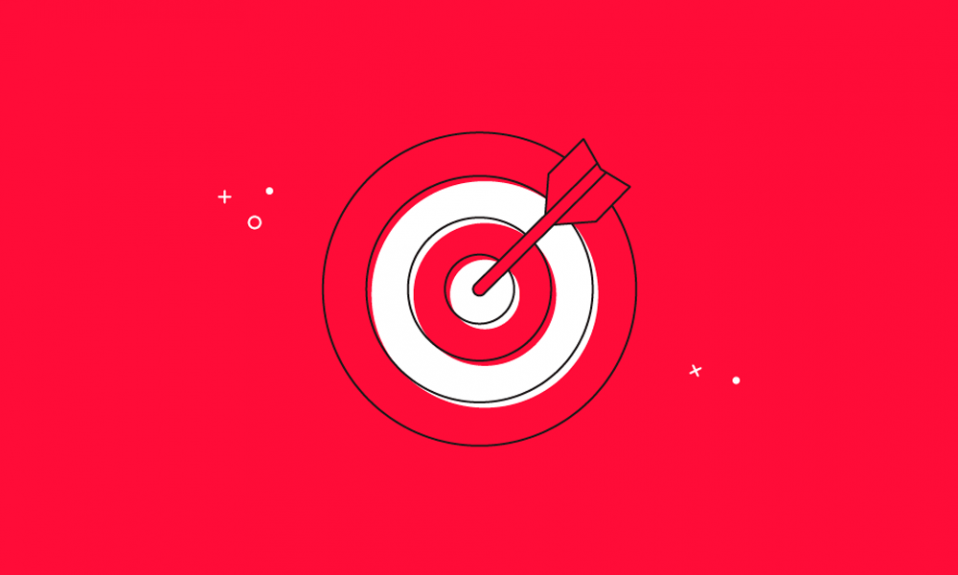Who is your target market? What is your target audience? What is your target market?
These questions can be very difficult to answer if you don’t know the answers.
Find out more about target audiences and how they can help businesses develop effective marketing plans.
Table of Contents
What is a target audience?
A target audience is a group that has been identified as likely customers for a business. These demographic traits are common to target audiences, including but not limited:
- Age
- Gender
- Localization
- Education
- Socioeconomic status
Your target audience can be a key part of your marketing strategy and help you identify your core customers. Instead of trying to reach every customer, spending money or resources on marketing, it is possible to target your most targeted customers.
How target audiences work

It is important to first think about the needs that your product or service addresses. This will help you find your target audience. It is important to first identify the pain point and then figure out who it is. If you discover that building websites can be a tedious task and decide to start your own business designing websites, the next step is to determine who would need one. This scenario will likely make you a target audience of small-business owners.
Advertising to your target audience is more effective if you are more precise about who you are targeting. This example shows that small business owners are less technically sound. You might choose to target small business owners in particular locations, rather than focusing on them all.
You won’t need to conduct as much market research if your product is broad in scope. It’s essential to collect data about your customers if you have a more narrow focus. If they complete a survey, you can offer a discount or coupon code to customers who visit your site or business.
Understanding your target audience is a great way to increase sales
Understanding your target audience is essential for a marketer. This information will guide every marketing strategy and plan that you implement. Although it might seem great to reach as many people as possible during the Super Bowl, it can also be very expensive. A quarter of viewers might not be interested in your product. Your target audience will read a particular publication or watch a specific show, so your ad will reach fewer people but still be seen by the right people. If you sell shoes, advertising in running magazines might be more appropriate. Choosing the right media will help you achieve marketing ROI.
Understanding your target market will help you build relationships with customers and increase ROI. It is possible to create creativity that appeals to specific people and to develop brands that reflect the values and interests of the most likely buyers. This is particularly important in a world where customers expect ads to be highly personalized and targeted. In fact, 80% of consumers believe they are more inclined to do business with brands that offer personalized interactions.
What are the types of target audiences?

You can further segment your target audiences into categories such as reference, intent, place and interests. Let’s look at some examples of how you can segment your target audience.
Interest
You can create separate groups based on your interests. This will allow you to create data-driven messaging that is highly personalized and allows you to connect with your audience in meaningful, memorable ways that can drive brand loyalty.
Buy Intention
You can define groups of people that are interested in a particular product such as a car or entertainment system. This will allow you to understand the pain points of your audience and create targeted messaging that addresses them.
Subcultures
Subcultures are groups of people who have a similar experience. Understanding the motivations of your target audience will help you better understand them.
What is the difference between Target Audience and Target Market?

Target market refers to the group of consumers that a company intends to reach through marketing activities. Target audience refers to the segment or group within that target market where advertisements are being placed. This allows the target audience to be a subset of a target marketplace.
Let’s go back to the example of running shoes. Your target market would be marathon runners. But let’s say that you have a deal at your Boston store. Prospective runners in the Boston Marathon are the target audience for the ad.
Target market and target audience are often interchangeable. It is a subset of the largest market group. However, the target market does not always mean the target audience.
7 ways to determine your target audience

You must spend time analyzing the data from consumer engagements to determine your target audience. This will allow you to evaluate current buyers and trends, and optimize as new information becomes available.
These steps will help you reach your target audience.
1. Conduct Client Interviews
The best way to find out who your target audience is is to look at those who have purchased your product or service. What is their age, where are they from, and what are their interests? Engaging on social media or distributing customer surveys is a great way to find out this information.
2. Identify industry trends and conduct market research
To find gaps in the service market that your product can fill, take a look at the market research of your industry. You can look at similar products and see their focus areas, then you can focus on your product’s unique value.
3. Analyze Competitors
Marketing professionals can learn a lot from looking at their competitors. This allows them to identify who they sell to and how they do it. Do they use online channels? Do they focus on the decision-maker or the supporter?
4. Create Personas
Personas are a great way of drilling down into specific segments of your target audience. This is especially useful if you have a product that appeals to many consumers. Personas can help you determine the demographics, personalities, and needs of your target audience. The persona “Fran First Time Runner” will have different needs than the “Sam Seasoned Pro.” Personas can be created based on data, surveys and other information that marketers can access to get a better understanding of buyers. These could include favorite hobbies, television shows, magazines, etc. Marketers should have between three to five personas.
5. Define who your target audience isn’t
While there will be many consumers that are very close to your target audience, they may not respond to your messages. Be specific when determining your audience. Are you a woman or a woman between 20 and 40 years old? This will help you and your team avoid wasting money on segments that won’t yield any returns.
6. Continuously revise
You will gain a better understanding of your target audience as you collect more data and interact with customers. To get the best results, you need to constantly improve and refine your personas.
7. Google Analytics
Google Analytics provides extensive information about your website’s visitors. This data can be used to identify key insights, such as which channels your target audience is coming to or what content they are most interested in. It will also allow you to make more data-driven decisions during the Media Planning process.
How to reach your target audience via social media

These tips will help you connect with more people once your target audience has been identified.
1. Ad targeting and lookalike audiences
GANT increased its audience using lookalike audiences. These audiences were based on both subscribers and customers.
Lookalike audience targeting can be one of the easiest ways to reach your target audience via social media. People who are similar to your brand share certain characteristics and behaviors.
You don’t yet have a subscriber or customer list. However, you can still use specific targeting options to target Facebook ads. This will allow you to reach precisely the audience that you identified during your research.
You should ensure that the ads appeal to the exact audience you are targeting. Do the ads speak to the exact market you have identified in a suitable voice? Are the visuals appropriate for your target market?
2. To maximize reach, A/B-test organic and paid content
You may need to adjust both your paid and organic social content strategies in order to reach your target audience on social media sites.
To begin tweaking your social media profiles, use the information you gained from your research on your target audience.
You can refine your content using A/B Testing as you discover what works best.
3. Revisit your audience research as necessary
Your A/B testing results may give you additional insights that you didn’t know when you created your target market statement. Any lessons learned should be incorporated into your target market statement.
Revisit your target audience definition regularly. It is important to ensure that your target audience definition accurately describes who you want to reach via social media. Although The Limited’s definition of the target audience has been effective for over 40 years, it won’t work for all companies.
Over time, your target market may change. Atari, for example, targeted children in the 1980s with its gaming console.
Atari today targets the same people that played its games in the 1980s. These people are now adults and view Atari as part of their childhood.
Summary
To ensure the long-term success and sustainability of any business, it is essential to have clearly defined target markets.
You can only go so far with the scattergun approach – that is, if you make it past this start line.
It is important to know who your business serves and why they should care. Testing is the best way to find out who your target audience should be.
After you have defined your target market, make sure your products and services meet their needs. Next, define your target market – the group to which you intend to send your marketing messages.
Don’t forget that a large net can spell doom for small businesses. So get specific.
What is your company’s one-of-a-kind benefit to customers? Please leave a comment below to let us know.

SEO specialist, link builder, and blog editor at Turbologo. Writing insightful content about marketing, design, and branding. Sharing practical tips on building and promoting brands online.









